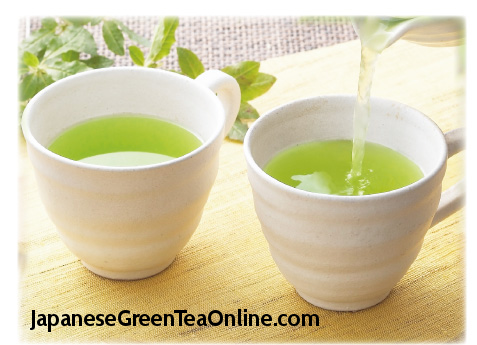Japanese Green Tea Types
Many consider gyokuro to be the finest Japanese green tea. This is, however, a matter of preference.

Sencha
About 75% of all tea harvested in Japan is graded as sencha. Sometimes described as a common tea. The best sencha is most uncommon.
Sencha is highly variable. Quality depends on the tea's origin, the season, and leaf processing techniques that are employed.
GyokuroFor gyokuro only the youngest flush leaf is picked. Special cultivation techniques are employed to produce a tea that is famous for its rich flavor and pale lemon-green color.
Gyokuro tea plants are grown in the shade for approximately three weeks before harvesting begins. Removing direct sunlight in this way reduces leaf photosynthesis which alters the proportions of flavonols, amino acids, sugars, and other substances that provide tea aroma and taste.

For high-quality gyokuro the leaves are (unlike sencha) aged for about 3 months or more. This aging process produces a tea that is renowned for its smooth elegant taste.
This wonderful tea differs from gyokuro in that the leaves are not rolled at all. After steaming, the leaves are thoroughly dried. This is tencha. The tencha is then stone-ground into a superfine powder, and that powder is what is known as matcha.

Good matcha is energizing and delightful.

High quality matcha is very finely ground and whisks to a brilliant green color.

